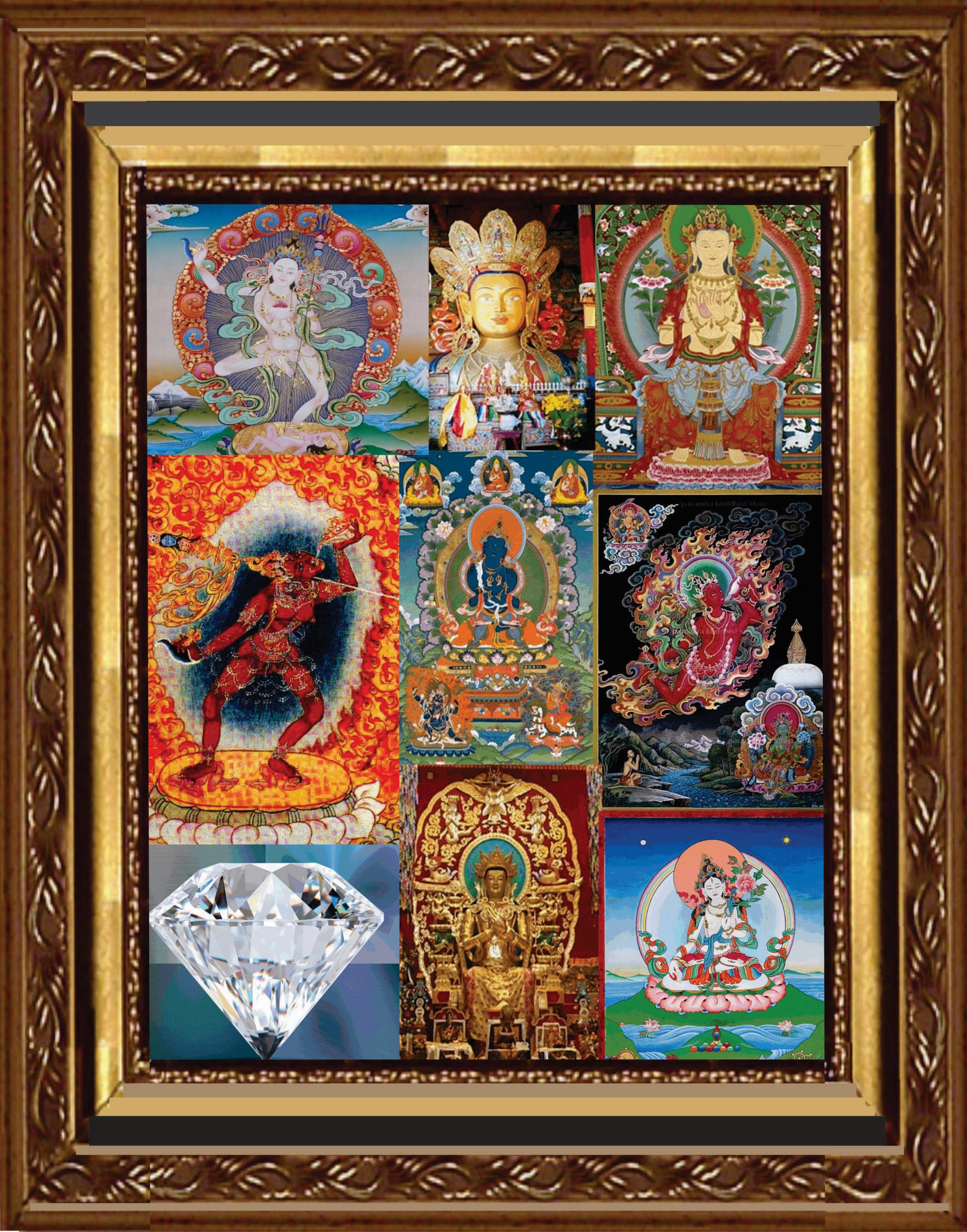
| LOST SADHANAS.ORG | THE LOST SADHANAS PROJECT |

During the same period as the rise of Sahajiya religion in Bengal, from the eighth to twelfth centuries CE, we also see the entrance of esoteric Buddhism through the Himalayas, into the areas of Tibet, Nepal, Mongolia, Bhutan and Central and Eastern Asia. It was called by various names, including Vajrayana (the diamond or thunderbolt path), Guhyamantrayana (the path of secret mantra), Tantrayana, and Tantric Buddhism. Today, Indo-Tibetan Buddhism is a popular name for the tradition. Some ideas were brought north out of India to Tibet by the mahasiddhas, the wandering Buddhists yogins of India. Rather than following the monastic tradition which grew up after the historical Buddha's death, these figures would follow the style of Hindu tantrikas who meditated at burning grounds. They performed types of yoga that made use of bodily imagery, had consorts, and meditated upon mantra, mudra and mandala. Some of their texts focused on liberation or enlightenment, some on supernatural figures (such as yoginis and dakinis) who acted as spiritual guides, and some emphasized magical abilities, such as knowledge at a distance, invisibility, flight, and healing illness. The development of these traditions was influenced by many factors, including the Hindu Shaiva meditation of skull-wearing tantrikas called kapalikas, imagery from Indian royal courts, and local shamanic village religions. We also see the influence of the pre-Buddhist Bon and shamanic traditions of Tibet.
Scholars generally agree that scriptures from Indian Tantric Buddhism were first translated into Tibetan in the seventh century CE, and Vajrayana was established in Tibet in the ninth century CE, under King Trisong Detsen. He was influenced by Buddhist figures like Padmasambhava (Guru Rimpoche) and Santarakshita. The first Tibetan Buddhist monastery, Samye, was built during this period. Tibetan Buddhist philosophy included many Indian tantric ideas, as well as beliefs specific to Tibet, such as the tulku system (of conscious reincarnation) and terma literature (a continuous revelation of religious texts and practices over time, its hidden teachings mediated by dakinis and other supernatural figures).
Over time, Tibetan Buddhism became primarily a monastic system, and four major lineages or schools arose: Nyingma, Sakya, Kagyu, and Gelug. Other smaller schools focused on their own texts, and there was tension between the different Buddhist factions. Tibetan Buddhism has a long history of philosophical debate and argumentation between schools, with the winner claiming superiority over other lineages, which were claimed to have a lower or flawed understanding. Some groups forbade studying one another's scriptures. Some monasteries fought each other, with soldier-monks as warriors, and over time the religious climate became a partisan one. There was increasing domination by the Gelug school, and by the seventeenth century, the Gelug view and politics increasingly dominated in Tibet and the minority lineages were at risk for losing their traditions. Minority views that had been marginalized had a hard time surviving. But what could be done about lost texts and teachings?
Please click on the [ NEXT ] link below to continue.
[ BACK ] Early History [ NEXT ] Continuing Revelation in Vajrayana Traditions
Introduction | Methodology - Participant/Observer | The Bodhi Tree Sadhanas | Vajra Dakini Discussion | Vajra Dakini Commentary | Vajra Dakini Sadhanas | Vajra Yogini Commentary | Maitreya Sadhanas | Vajradhara Speaks About Yidams | Lost Sadhanas Conclusion
Home
Copyright © 2021, J. Denosky, All Rights Reserved